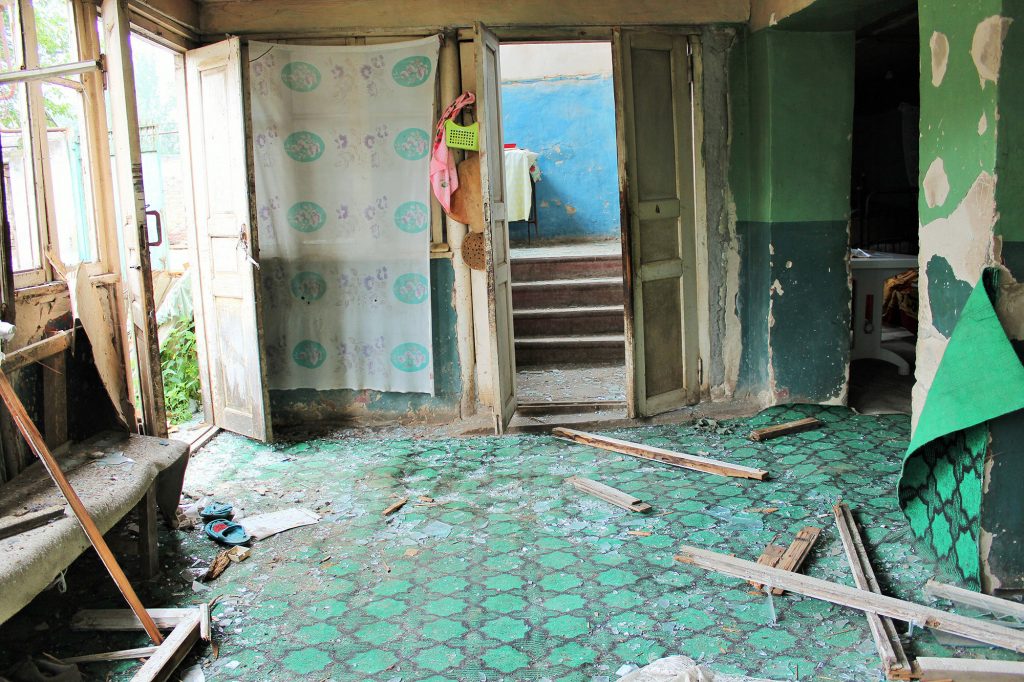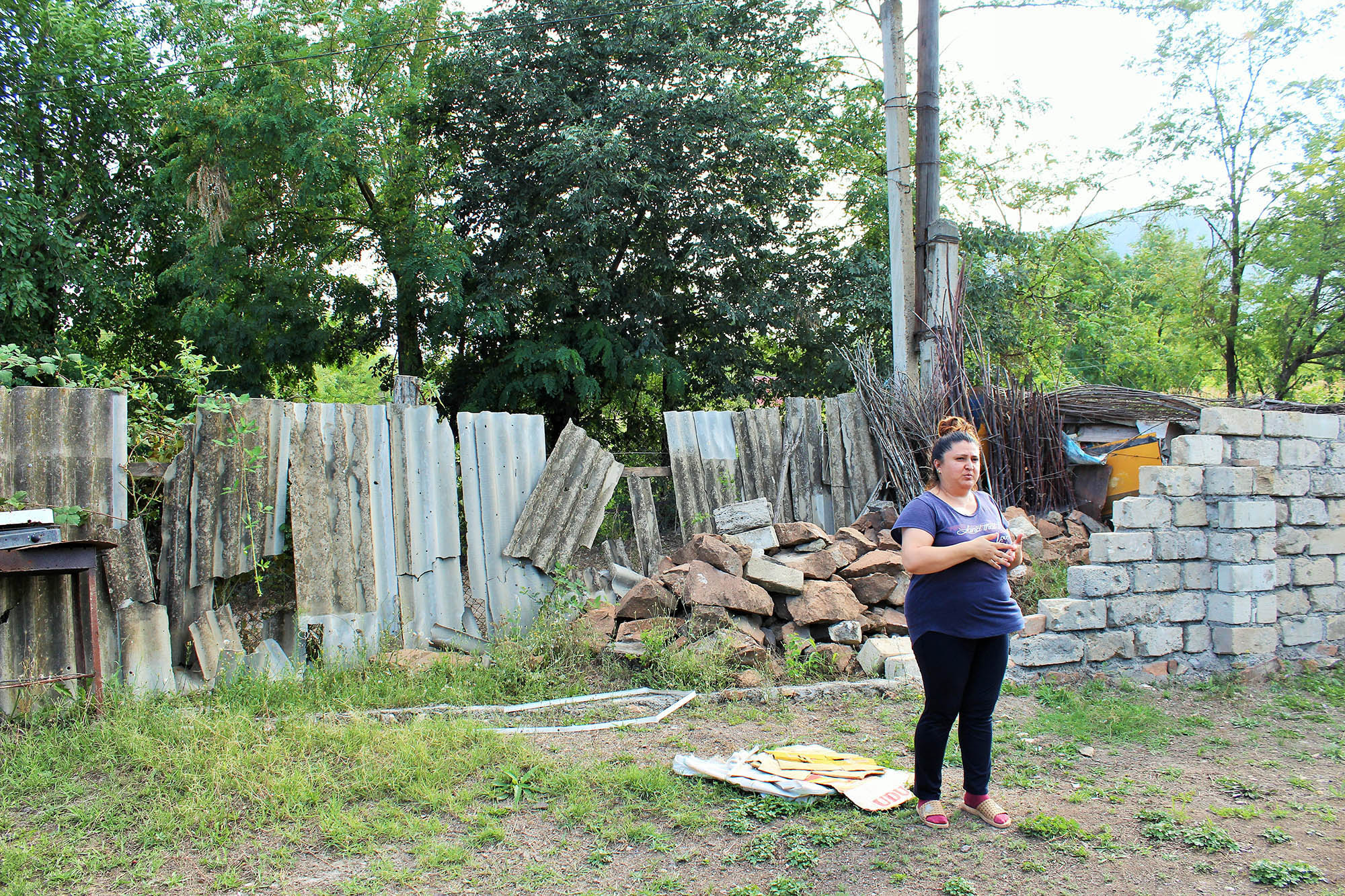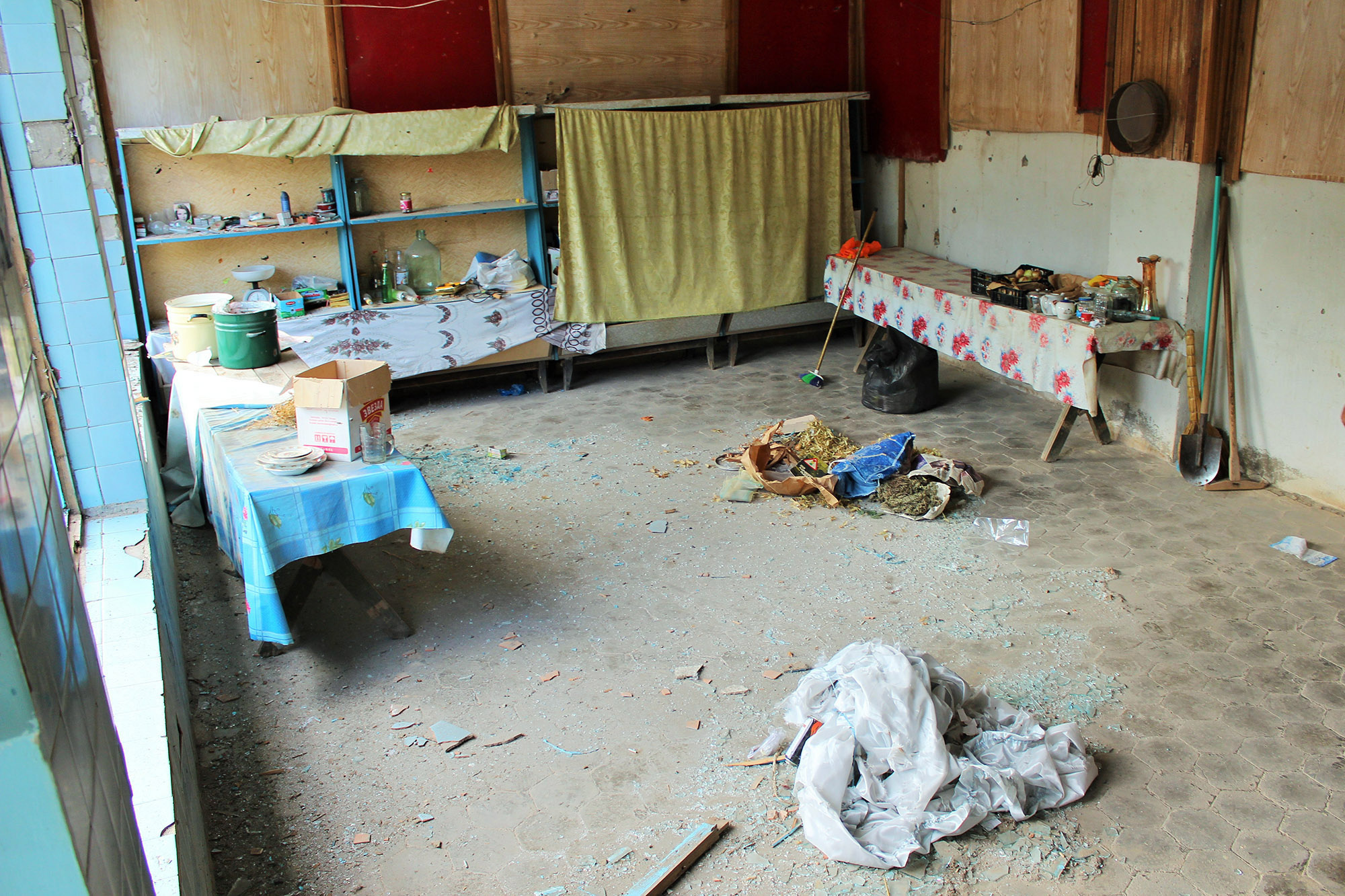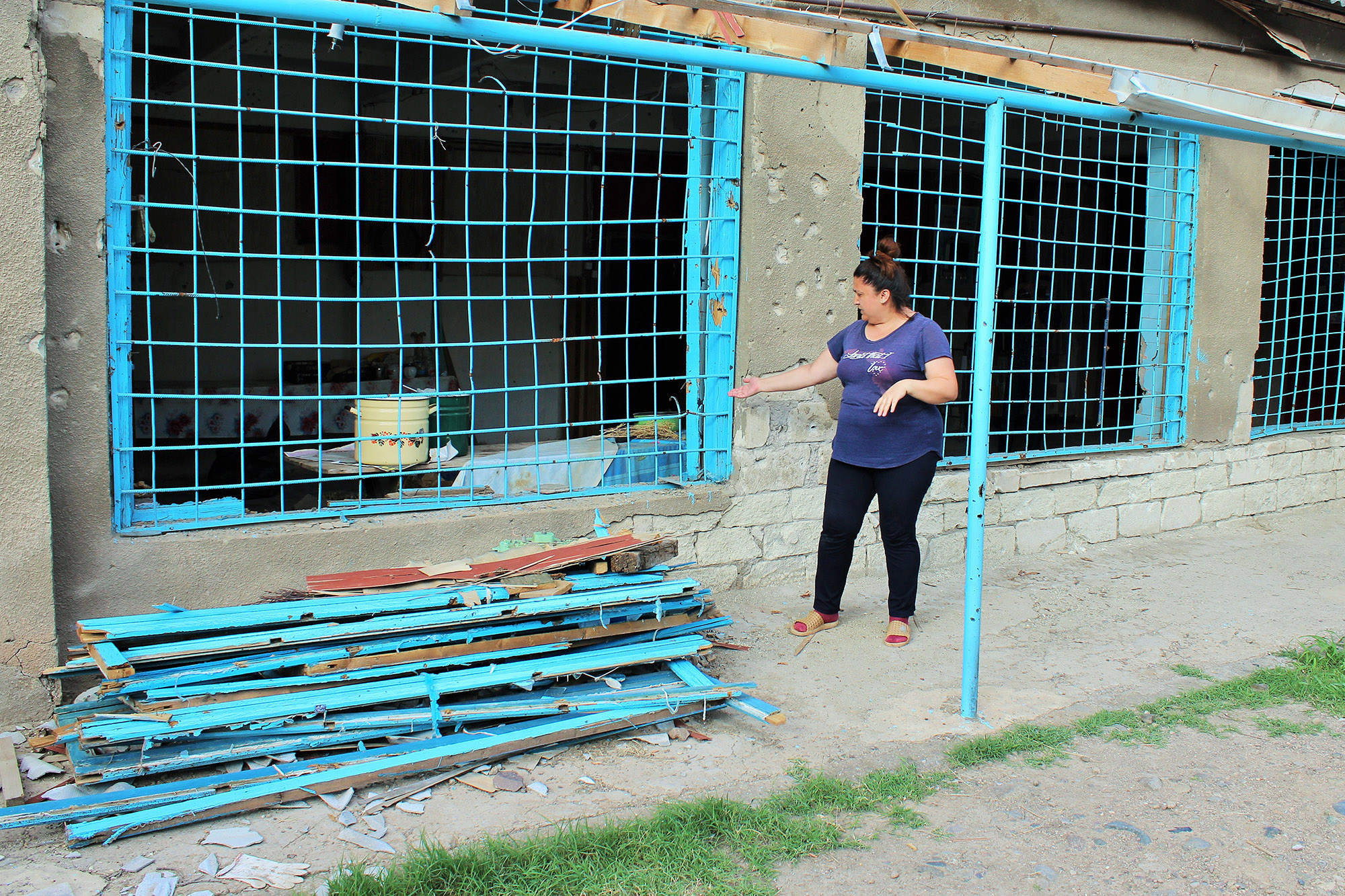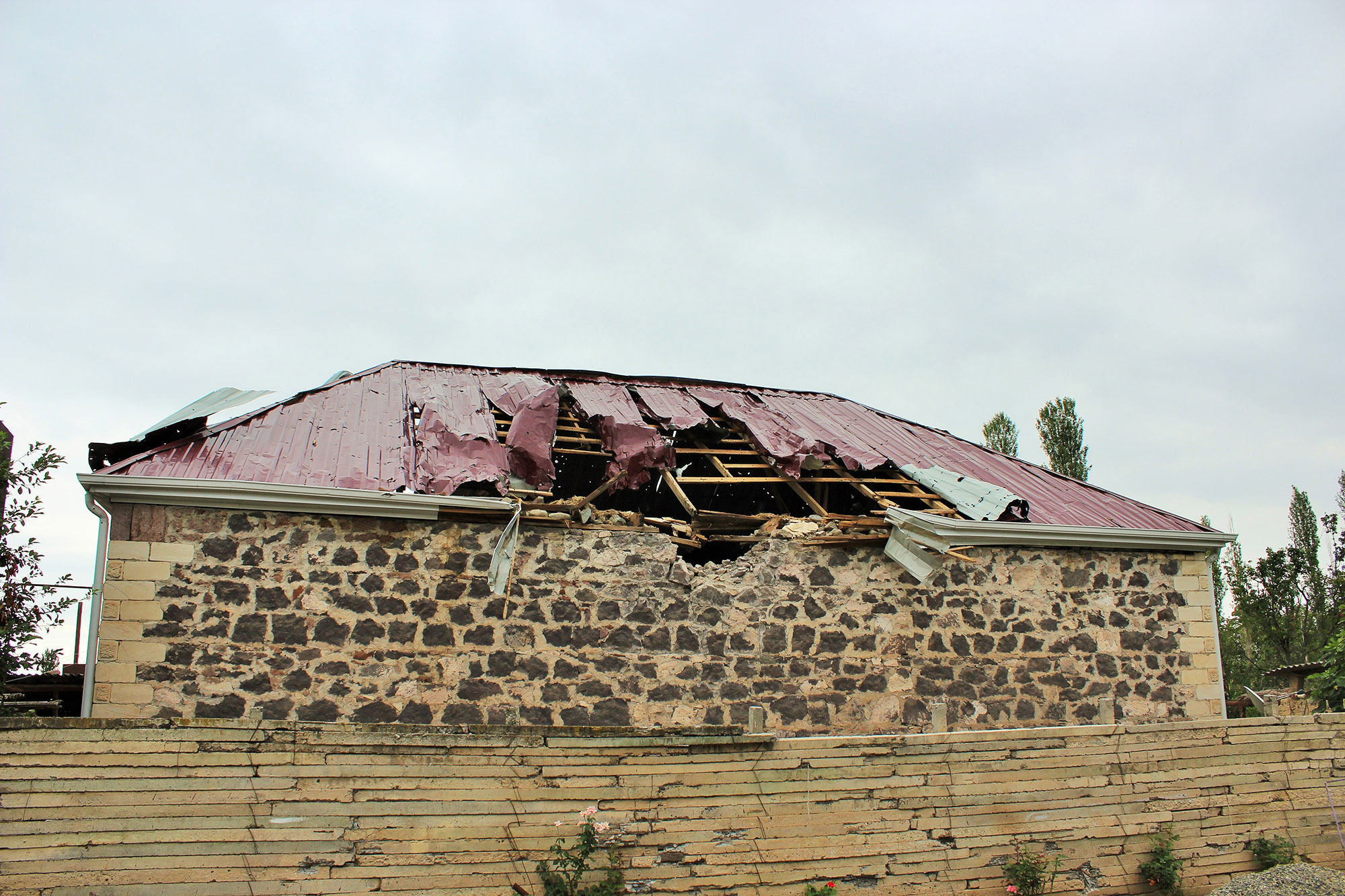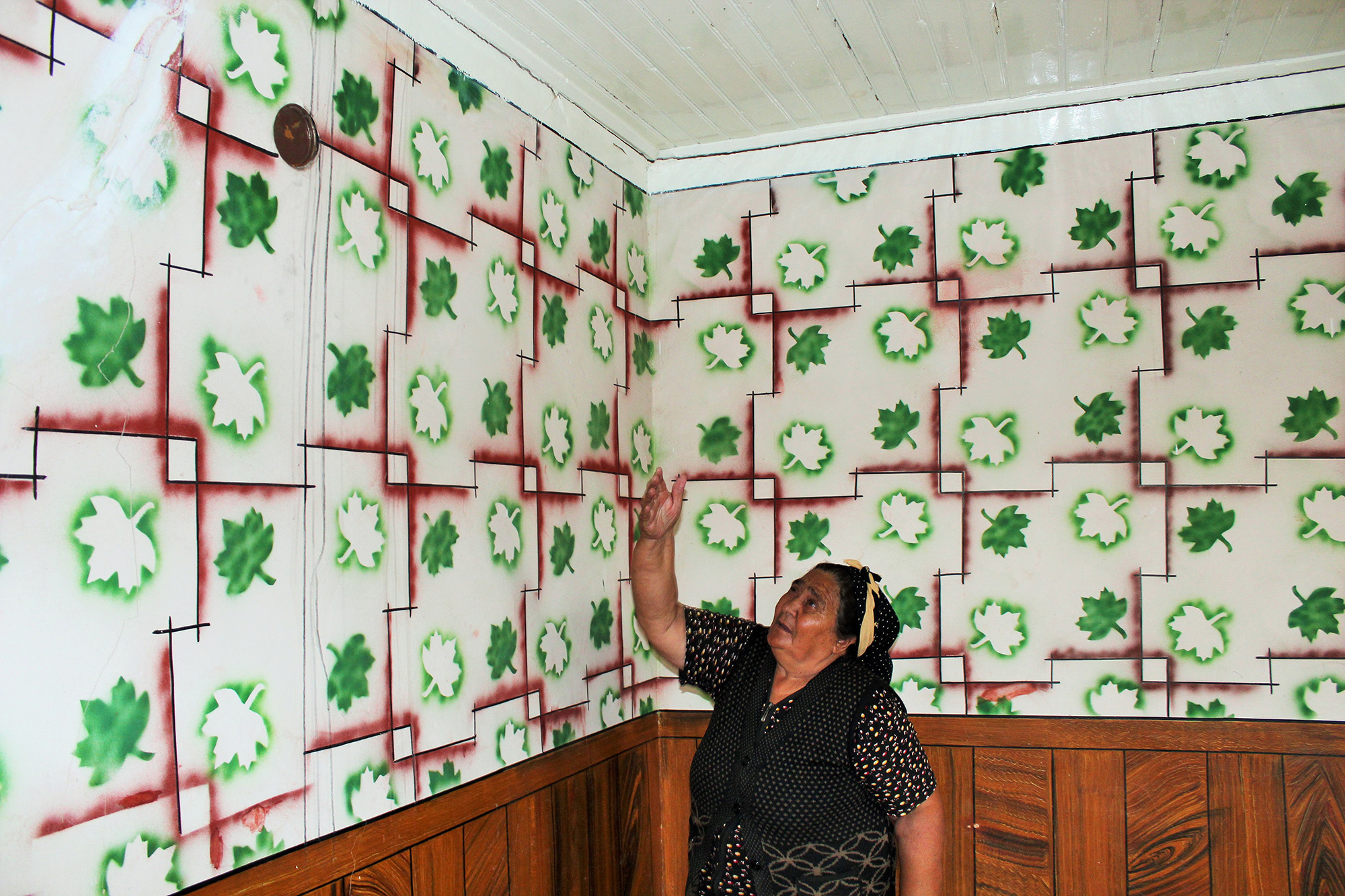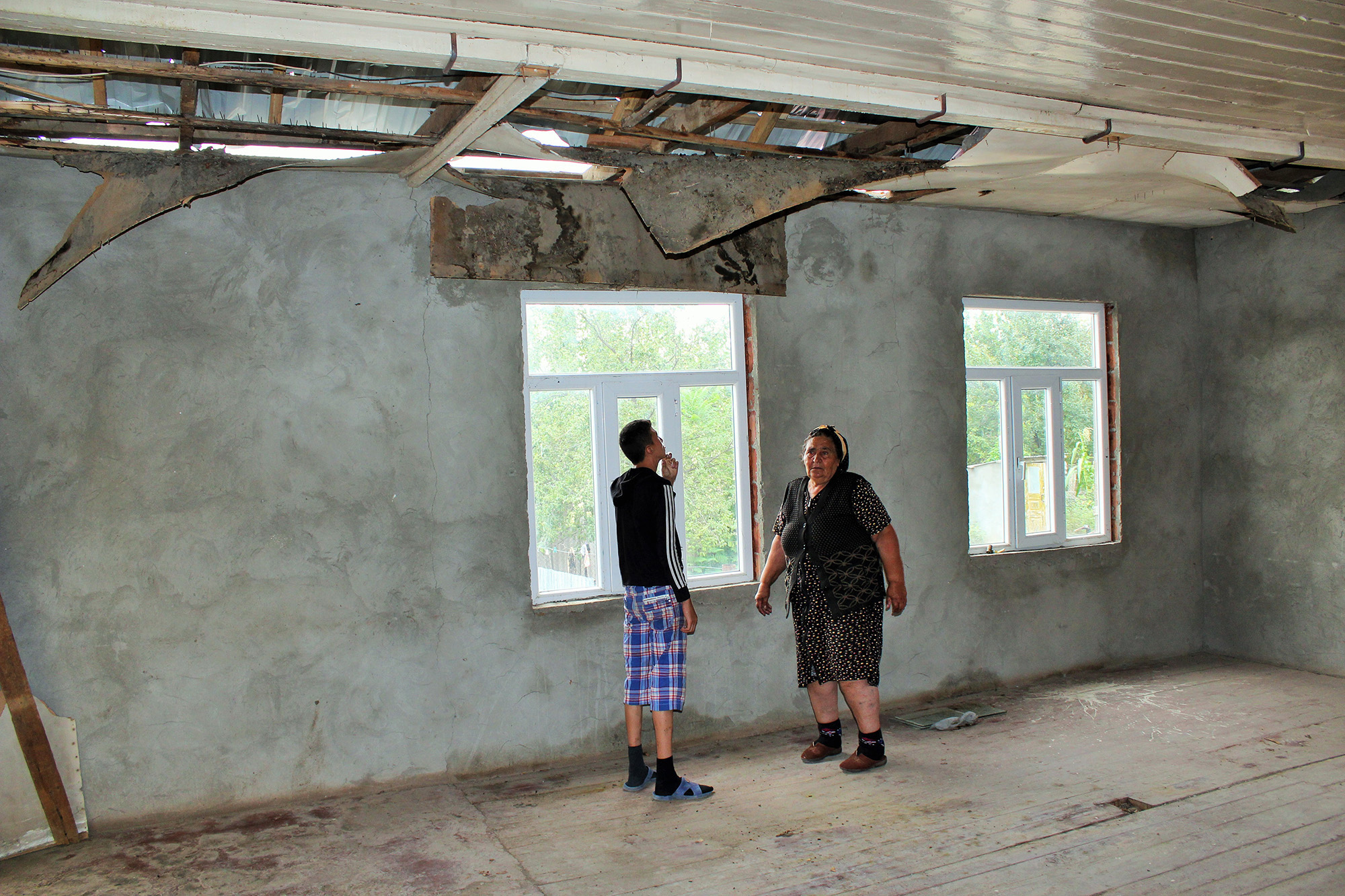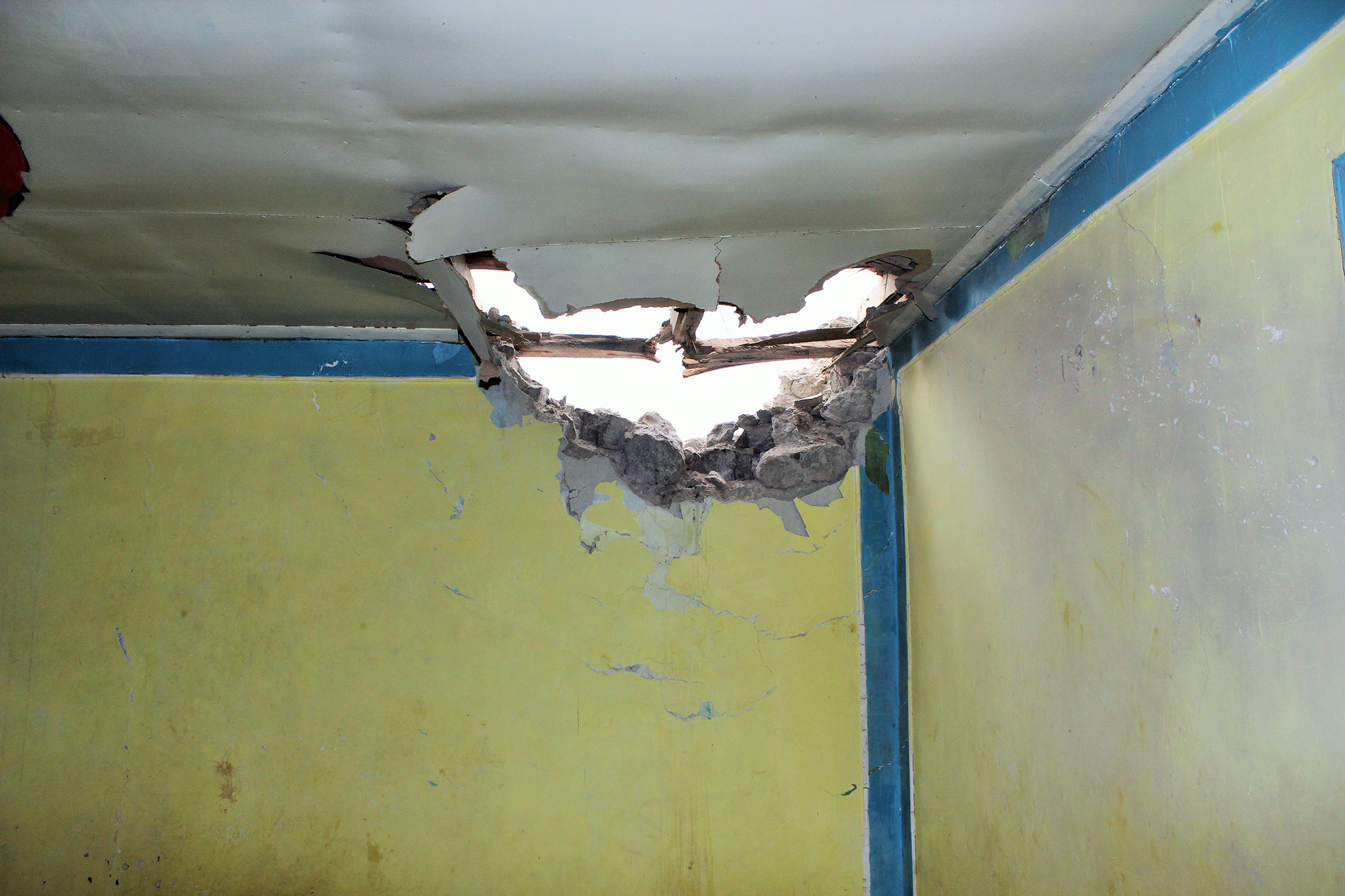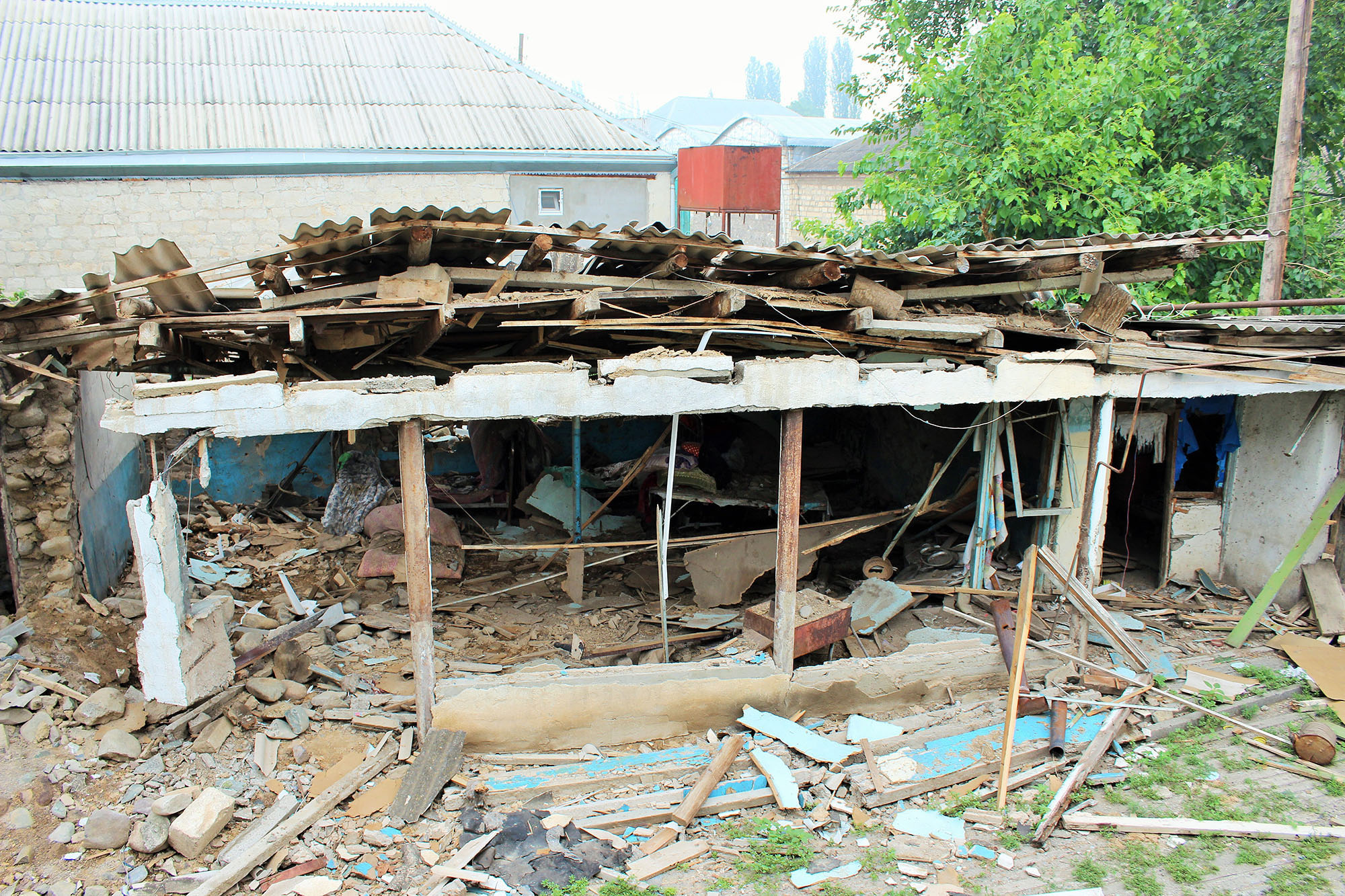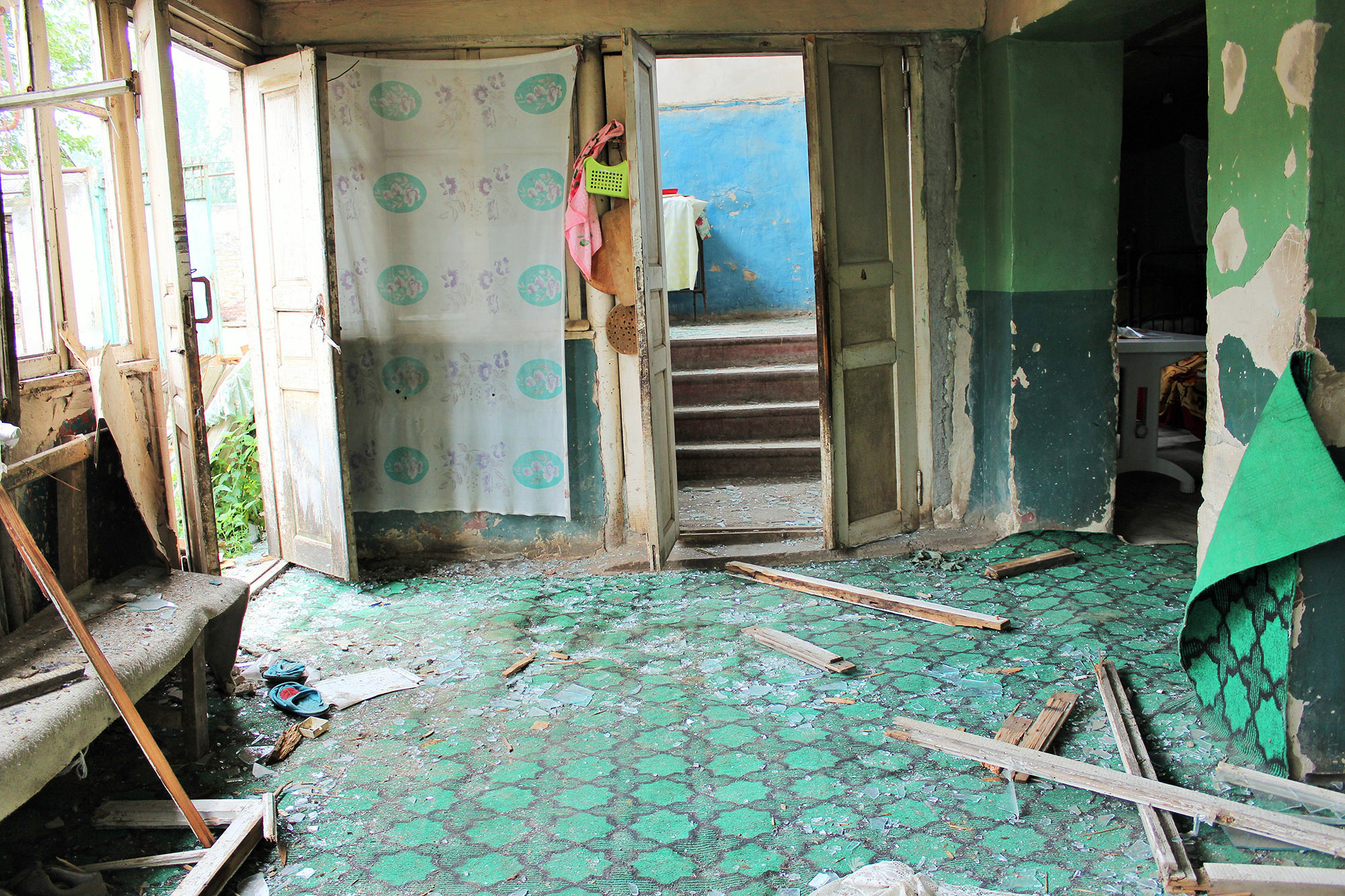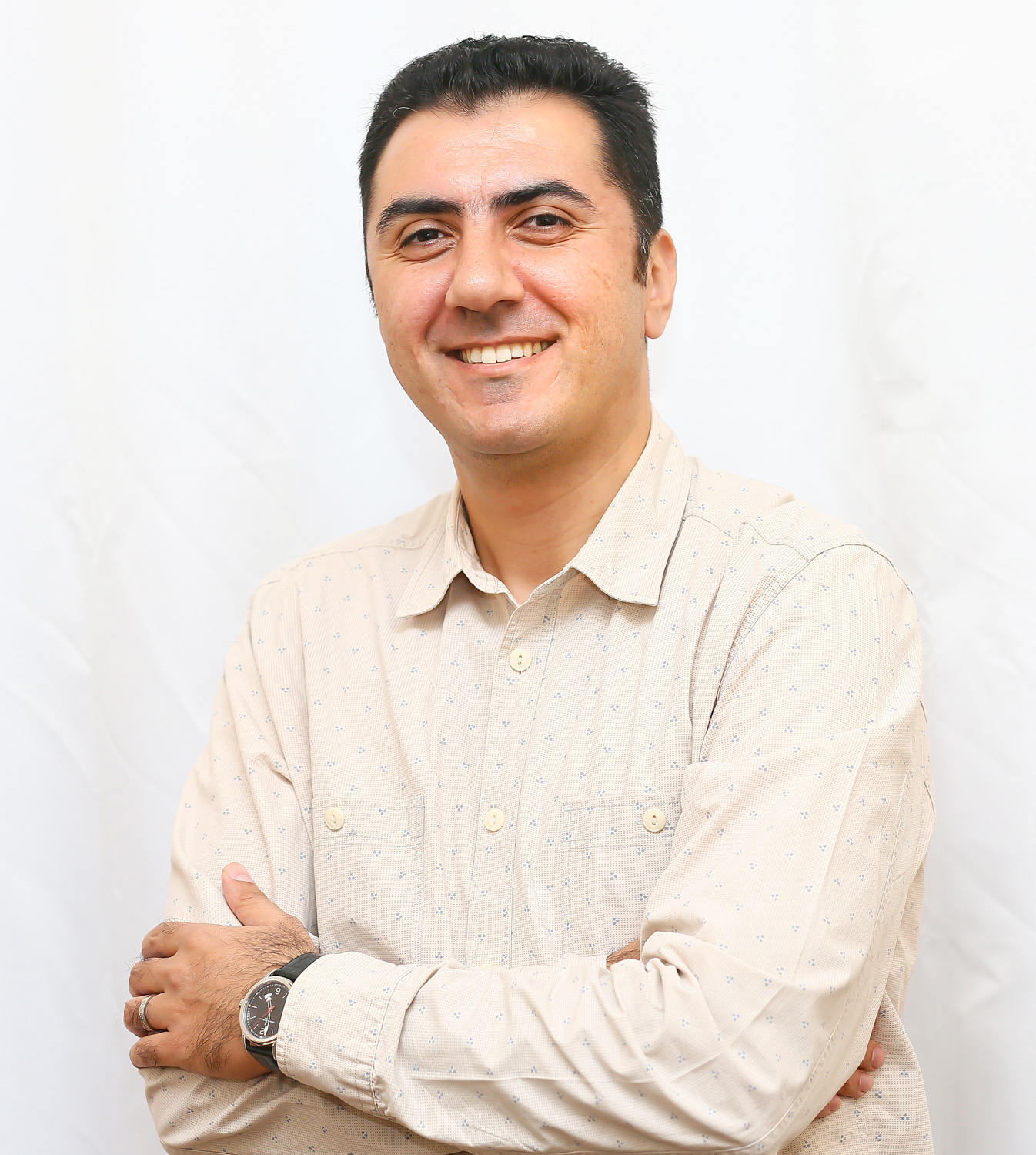On 12 July 2020, fighting broke out on the northern section of the Armenian-Azerbaijani border, lasting for several days. As soldiers on the frontline exchanged fire, artillery shells fell on the villages of Armenia’s Tavush Province and Azerbaijan’s Tovuz District.
OC Media travelled to the border regions of both countries to speak with the civilians who found themselves in the line fighting and to share their stories.
Below is our report from the Azerbaijani side of the border.
You can find our report from the Armenian side of the border here: The July escalation: Armenian civilians in the line of fire]
‘The last time I spoke to my father on the phone was on 14 July, at 08:00. We were all at home when the shooting started on 12 July, and as the situation escalated, my father asked us to leave the village and go to a safe place, and we tried hard to take him with us, but he refused to go’, Zarnishan Gozalova told OC Media.
‘In the afternoon, on 14 July, we received the bad news that my father had died.’
Gozalova is the daughter of 76-year-old Aziz Azizov, who was killed during an artillery exchange on the Azerbaijani-Armenian border, during the recent military escalation between the two countries.
Azizov was the only civilian to perish during the fighting.
Gozalova recalled how she learned of her father’s death. ‘After 09:00, there was no news from my father’, she said. ‘We were calling my father, but he was not answering.’ Then she asked relatives in the village to go and check on him.
Because the shelling was still ongoing, Gozalava’s relatives were forced to wait three anxiety-ridden hours before venturing out. At noon, they crossed the village to Azizov’s home, where they found his body.
Aziz Azizov’s cause of death was later identified to be several shrapnel wounds to the head, abdomen, and legs from a shell that exploded in his yard.
Azizov was a resident of the village of Aghdam, in Azerbaijan’s Tovuz district. It is one of a number of villages in the district that are nearest to the Azerbaijan-Armenia border, and as a result, have suffered serious damage during the fighting.
Hagigat Mammadova, the executive representative of Aghdam, told OC Media that the shelling had continued even as Azizov was buried in the local cemetery.
Vahidli
Arif Mammadov, 60, is a resident of Vahidli, a village roughly 7 kilometres down the road from Aghdam. He told OC Media that as a result of artillery fire on his village on 16 July, his haystack caught fire, causing over €1,000 in damage and leaving him near the brink of total destitution.
Normally employed as a cook, he has been unable to work due to the pandemic, with agriculture his only means of income. ‘I suffered damage when my financial situation was already not good’, he said.
To make matters worse, he said cracks have appeared in the walls of his house as a result of nearby artillery fire.
Fazakat Abdullayeva, 52, and her 31-year-old son Elman, both residents of Vahidli, hid in a ravine during the shelling on 13 July. Meanwhile, a shell landed in the field next to their home.
‘We make a living by selling the fruits and vegetables we get from this field’, she told OC Media. ‘The bomb went off, and most of what I planted was destroyed — we have not had any income for the last three weeks.’
It was not Elman’s first encounter with the violence of the conflict between Armenia and Azerbaijan. In 1993, when he was only a child, he received a concussion and severe hearing damage as fighting raged between the two countries.
Fazakat told OC Media that as soon she learned that fighting had began on the border, she had Elman’s one-year-old son sent away to Ganja, far away from the front — she said she wanted him to escape the fate of his father.
According to Tofig Guliyev, deputy executive representative of the village, artillery damage was widespread. ‘Seven houses were damaged as a result of artillery fire of the Armenian Armed Forces’, he said, adding that state-supported reconstruction and restoration of these homes would begin soon.
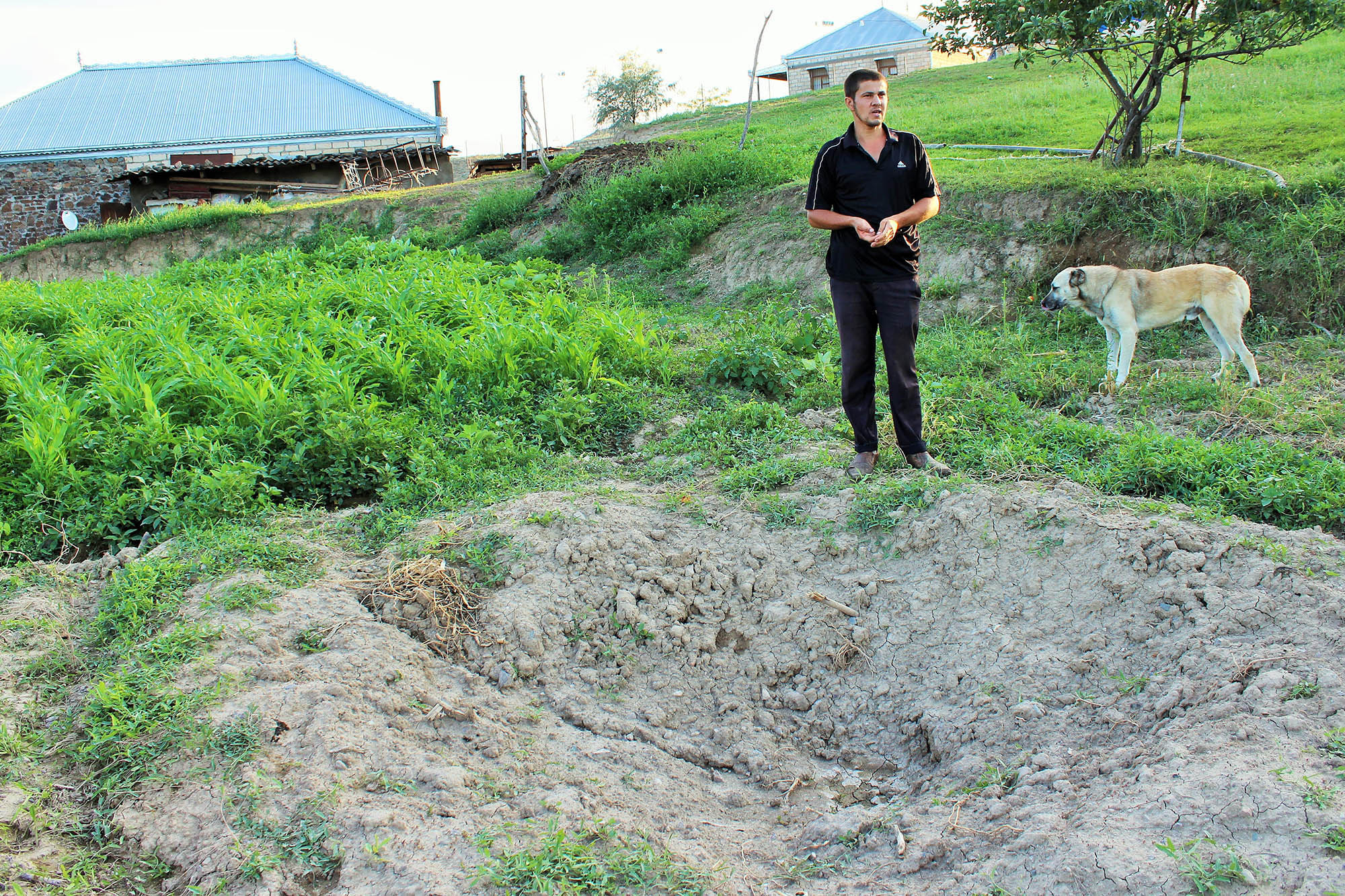
Dondar Gushchu
‘On 13 July, a shell hit my neighbour’s yard, and my blood pressure rose from the stress. There were neighbours in our yard along with our family members’, Telara Aliyeva, a 72-year-old resident of the Dondar Gushchu told OC Media. ‘As my blood pressure rose, I was taken to the doctor, everyone left the yard, and a few minutes later my house was bombed.’
The home had only been renovated five months prior, through a loan that Alieyva had taken. ‘Now my house is uninhabitable and I will still continue to pay for the loan’, she lamented.
Aliyeva’s was one of two homes in the village that became uninhabitable due to the bombardment. The second home belongs to sisters Roza, 19, and Birana Abdullayeva, 21. They were not home when their house was hit, and so escaped uninjured.
According to Ramiz Sadigov, the deputy executive representative of Dondar Gushchu, a total of 37 homes in the village were damaged during the fighting.
On 20 July, to address the damage suffered by the residents of Dondar Gushchu, as well as all other villages in Tovuz affected by the fighting, the President of Azerbaijan issued an order to calculate and ameliorate all property and infrastructural damage caused by the fighting.




 12 August 2020
12 August 2020
